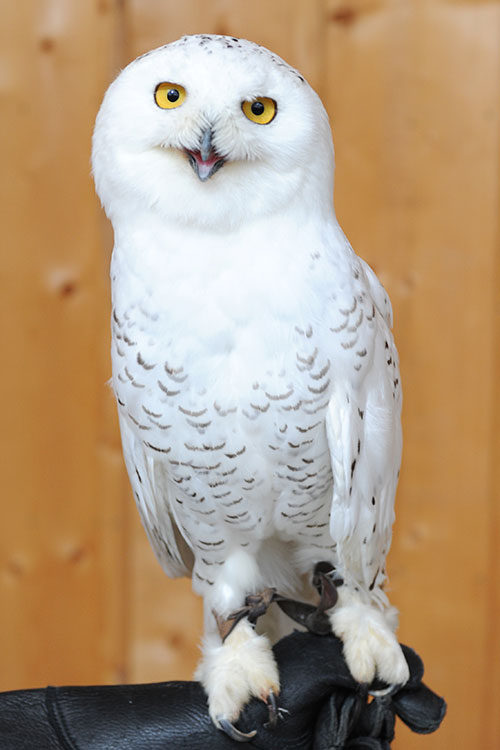Tundra’s Story
Tundra is a male Snowy Owl (Bubo scandiacus) who came to the WSU Veterinary Teaching Hospital in December of 2011. He was most likely hit by a car, and had two injuries to his left wing – a fractured radius/ulna and a dislocated elbow. The radius/ulna healed well, but the dislocation is irreparable. Because Tundra can no longer fully extend his left wing, he will never be able to fly.
Facts about the Snowy Owl
Habitat:
Snowy owls spend the summer in the very far northern reaches of the Arctic, where they breed. In the winter they migrate south, but usually only as far as southern Canada. However, these owls will occasionally have a very successful breeding year, and a sudden increase in population will cause them to spread much farther south into the United States. Tundra was found near Spokane during one of these population events, known as an “irruption”. In the winter of 2011-2012, snowy owls were seen as far south as Idaho, Missouri, Oklahoma, and Massachusetts.
Hunting & Diet:
Males & Females:
Male and female snowy owls are somewhat sexually dimorphic. Young males have a white bib and a white spot on the back of the head, with dark brown barring on the rest of the body which fades as they get older. Old male snowy owls can become almost pure white. Female snowy owls keep the dark bars throughout their life. While there is some overlap, the whitest snowy owls will always be males, and the darkest owls will always be female. All snowy owls have bright yellow eyes.
Mating & Nests:
Snowy owls nest on open ground in a shallow depression called a “scrape”. They do not nest on the snow. They will fiercely defend their nest from predators, including wolves.
Physical Features:
Identifying Characteristics:
The snowy owl is considered the largest and heaviest owl in North America. The great horned owl and the great gray owl come close, but neither quite has the body mass or wingspan to compare to the snowy.



